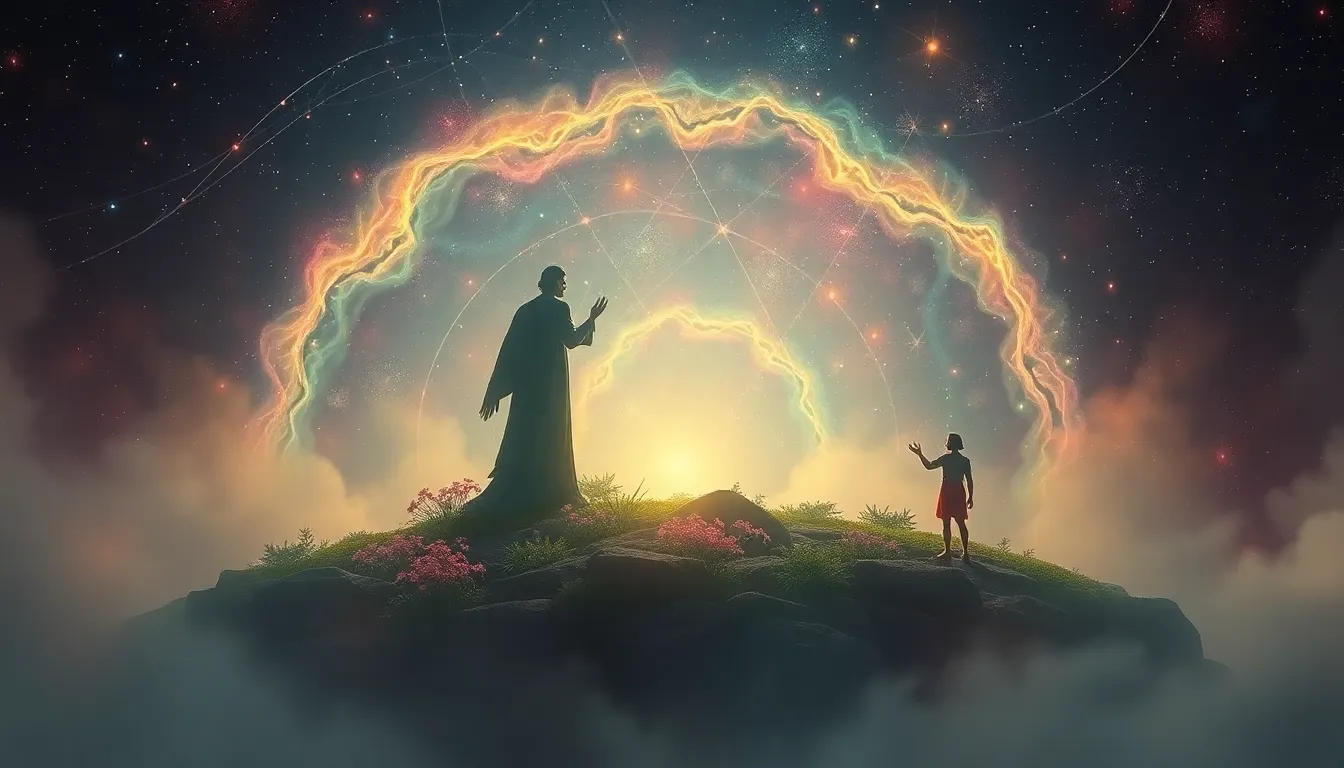Níðhöggr’s Shadow: Exploring the Dark Side of Humanity
I. Introduction
Níðhöggr, a prominent figure in Norse mythology, is often depicted as a dragon that gnaws at the roots of the great cosmic tree, Yggdrasill. This creature embodies the concept of decay and destruction, representing the darker aspects of existence that are often overlooked or suppressed. The exploration of Níðhöggr’s nature offers a profound lens through which we can examine humanity’s dark side—those parts of ourselves that we may find unsettling or difficult to confront.
The purpose of this article is to delve into the parallels between the myth of Níðhöggr and the complexities of human nature. By understanding this mythical figure, we can better comprehend the shadows that linger within us and the societal implications of these darker traits.
II. The Myth of Níðhöggr
Níðhöggr is said to dwell in Niflheim, the realm of ice and mist, where it feeds on the corpses of the dead. Its origin in Norse mythology is steeped in symbolism, representing the inevitable decay that accompanies life. This dragon plays a crucial role in the ecosystem of Yggdrasill, where it symbolizes the cyclical nature of existence—birth, death, and rebirth.
In the context of Yggdrasill, Níðhöggr’s actions serve as a constant reminder of the fragility of life and the destructive forces that lurk beneath the surface of the cosmos. Its role in gnawing at the roots of the tree signifies the persistent threat of decay and the importance of confronting these darker forces within ourselves.
The symbolism of decay and destruction associated with Níðhöggr can be viewed as a metaphor for the darker aspects of human nature that, if left unchecked, can lead to personal and societal disintegration.
III. The Psychological Underpinnings of Darkness
To understand the darkness within humanity, we turn to the psychological framework established by Carl Jung, particularly the concept of the “shadow self.” Jung proposed that the shadow consists of the parts of ourselves that we repress—our fears, desires, and instincts that do not align with societal expectations.
- Repressed Emotions: When individuals fail to acknowledge their anger, jealousy, or other negative emotions, these feelings can manifest in destructive ways.
- Desires: Unfulfilled or suppressed desires can lead to frustration and resentment, often resulting in negative behaviors.
Darkness can manifest in various aspects of human behavior, including:
- Violence and aggression
- Manipulation and deceit
- Self-destructive habits
Recognizing these manifestations is essential for personal growth and development, as it allows individuals to confront their shadows and integrate them into their overall identity.
IV. Historical Perspectives on Human Darkness
Throughout history, numerous figures exemplify the traits associated with Níðhöggr. These individuals often embody the darker aspects of human nature, showcasing the potential for destruction that exists within us all. Some notable historical figures include:
- Adolf Hitler: His role in instigating World War II and the Holocaust reflects extreme manifestations of hatred and oppression.
- Joseph Stalin: The purges and oppression under his regime illustrate the capacity for cruelty in pursuit of power.
- Genghis Khan: His conquests and the resulting destruction demonstrate the impact of unchecked ambition and violence.
These figures remind us of the profound impact that war, violence, and oppression can have on humanity. Cultural reflections throughout history, from literature to philosophy, have explored the dark side of human nature, emphasizing the need to confront and understand these aspects rather than ignore them.
V. Modern Manifestations of Darkness
In contemporary society, the influence of technology and social media has introduced new dimensions to our understanding of human darkness. The anonymity afforded by the internet allows individuals to express their shadows more freely, often leading to:
- Cyberbullying and harassment
- Spread of misinformation and hate speech
- Desensitization to violence and suffering
Moreover, rising mental health issues, including anxiety and depression, are closely linked to the darker aspects of human experience. The pressures of societal norms often compel individuals to suppress their true selves, leading to an internal struggle that can result in destructive behaviors.
VI. The Duality of Human Nature
Understanding the duality of human nature requires an exploration of the balance between light and dark. Acknowledging and integrating the shadow self is essential for personal growth and self-awareness. Embracing darkness does not mean succumbing to it; rather, it is about recognizing its presence and finding ways to channel it positively.
Case studies of individuals who have embraced their darkness for growth illustrate this concept:
- Victor Frankl: A Holocaust survivor who found meaning in suffering and darkness.
- Malala Yousafzai: Her resilience in the face of oppression highlights the strength found in confronting darkness.
These individuals demonstrate that by facing our shadows, we can transform our pain into purpose and growth.
VII. Pathways to Healing and Redemption
Confronting and understanding our dark sides is a vital step toward healing and redemption. Strategies for achieving this include:
- Self-reflection: Engaging in introspective practices such as journaling or meditation.
- Therapy: Seeking professional help to navigate complex emotions and experiences.
- Community engagement: Sharing experiences with others to foster understanding and support.
Empathy and compassion play crucial roles in overcoming darkness. By cultivating these qualities, we can better understand the struggles of others and ourselves. Additionally, the arts—be it literature, music, or visual arts—offer powerful avenues for processing human experiences and confronting the shadows that exist within us.
VIII. Conclusion
Níðhöggr’s symbolism serves as a poignant reminder of the complexities of human nature. The exploration of our dark sides is not merely an academic exercise; it is a necessary journey toward understanding ourselves and the world around us. By embracing the duality of our existence, we can foster awareness and dialogue about our shadows, ultimately leading to a more compassionate and empathetic society.
In closing, let us recognize that acknowledging our darkness is not a sign of weakness, but a testament to our strength and humanity. Together, we can navigate the shadows and emerge into the light.



